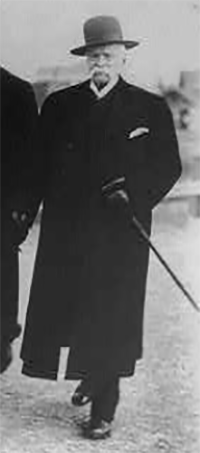Psychology
The Psychology of Walking
Why you should leave the car in the garage.
Posted March 27, 2022 Reviewed by Gary Drevitch

Are you up for a 3,925-mile walk, starting from New York and ending up in San Francisco? Could you do it in 105 days? That would mean averaging over 37 miles per day.
I turned 73 last year, and impressed myself by being able to walk a full 10 miles, ambling along a lovely pedestrian green belt to Scottsdale, Arizona. After 9 miles, I strolled into a nice restaurant, ordered some fish and a glass of wine for lunch, then walked another mile and called an Uber for a ride home. I was patting myself on the back for being such a physically fit senior citizen.
But I just finished reading a book about a fellow named Edward Payson Weston, who set out on his 70th birthday to walk from New York to San Francisco. His walk took him through upstate New York, around the Great Lakes to Chicago, then out to Denver, into Wyoming, across Utah and the Nevada desert during the early summer. The year was 1909, so most of the roads he traveled were unpaved and often muddy, and there was not a lot of shelter from torrential rain and hailstorms or the baking sun. But he made it, logging 3,925 miles before arriving at Union Square in San Francisco.
The book, by Wayne Curtis, is titled The Last Great Walk: The True Story of a 1909 Walk from New York to San Francisco, and Why it Matters Today. I wrote out the complete subtitle because the last few words — why it matters today – are what makes the book such a great read.
The author ambles back and forth between a description of the specifics of Weston’s long walk and fascinating historical and scientific asides, including a lot of psychology. He talks about Tolman’s classic work on cognitive maps, and other research on which features of the outdoor environment are most appealing to our brains (standing with an open view into the distance, but woods behind us is especially pleasant). The book also reviews evidence on the benefits of walking as a way to prevent the cognitive declines of aging.
At the time Edward Weston walked across the United States, there were relatively few automobiles. But that was beginning to change. In 1910, there was one car for every 200 Americans, by 1915, that had jumped to 1 for every 40 people. Today, the ratio is almost 1 to 1 (289 million cars to 330 million people). In cities, automobiles were already coming into conflict with pedestrians, killing 60 people and injuring 1,200 people during the first 7 months of 1909 in the city of Chicago alone.
In the early years of the automobile, drivers were held completely responsible for such accidents, but as society increasingly made way for the car, streets were widened, sidewalks were narrowed, speed limits were increased, pedestrians were forced to make way for automobiles, and it became a crime to “jaywalk.”
Despite all the attempts to keep pedestrians out of the way of cars, over 6,700 Americans were killed by automobiles in 2021. A large portion of those deaths involve pedestrians being mowed down as they cross streets legally, in marked crosswalks.
Curtis argues that pedestrians are beginning to reassert themselves against automobiles, as city-dwellers lobby to make their streets more walkable. You may not personally want to join a group working for safer and more pleasant pathways, but for your own physical and mental health, you might want to walk more. Here’s one simple tip from the land of behavior modification – keep a record of your walking, and give yourself a little star on your calendar every time you walk. Turns out that simply counting inspires us to do more. Another simple tip: change your daily habits so you drive fewer miles. I have given up my parking sticker, which initially inspired me to bike to the office. After reading about Weston, and realizing it’s less than 2 miles to ASU, I’ve ditched the bike and walk most days (taking a slightly longer route that involves pleasant side-streets and a small park and avoids cars). Even if you don’t live so close to work, you might be able to park a mile away from your workplace, which will force you to walk again at the end of the day.
(I've extolled the joys of getting old and walking, and some related research in 10 reasons I’m happy to be turning 70 and Do you underestimate the joys of nature? Go take a hike!)
Ironically, Weston was hit by a car at age 88. He survived, but ended up in a wheelchair for the next two years, and then died just after his 90th birthday.
References
Curtis, W. (2014). The Last Great Walk: The True Story of a 1909 Walk from New York to San Francisco, and Why it Matters Today. Harmony/Rodale


